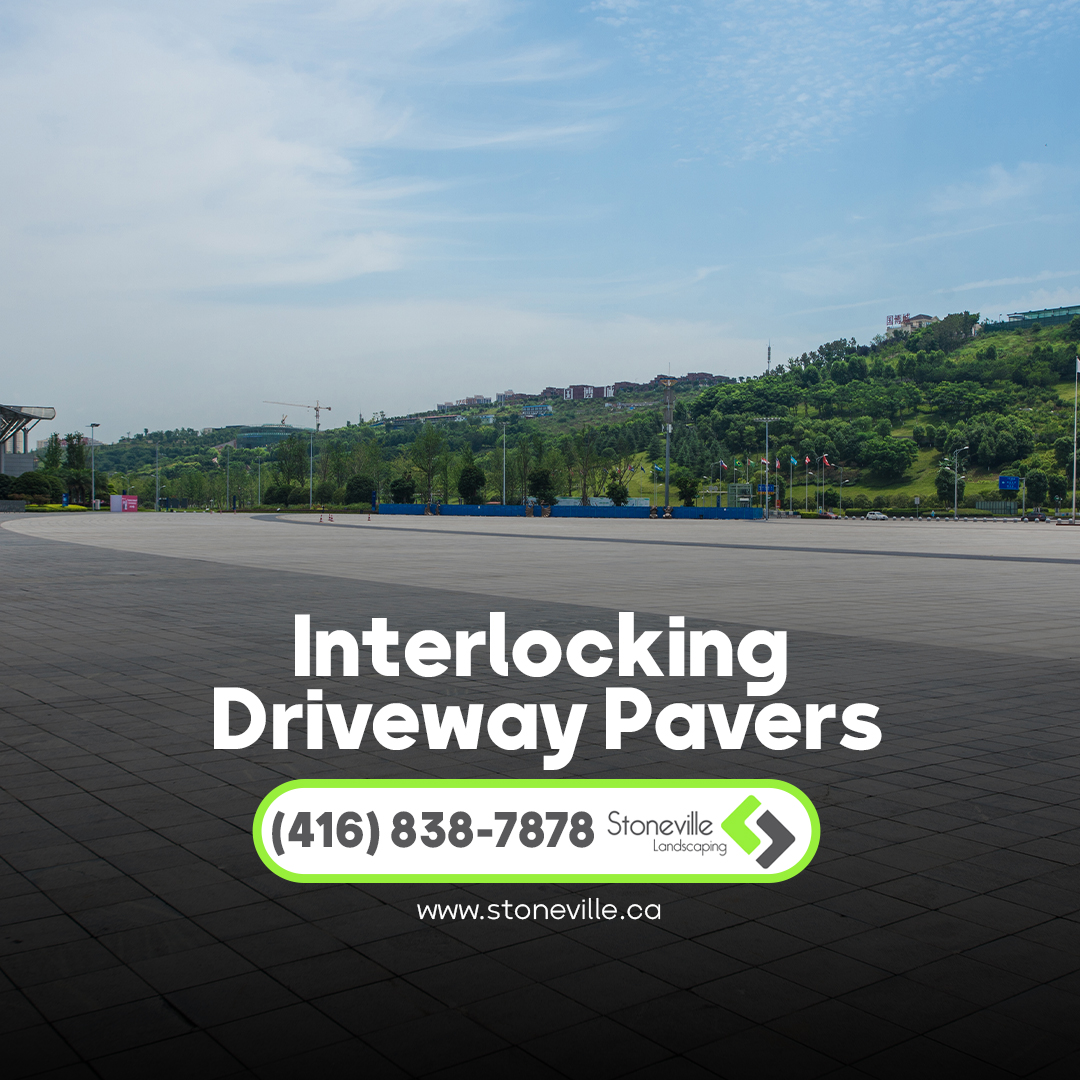Interlocking walkway pavers are a stylish and functional alternative to traditional asphalt or concrete walkways. These paving stones, which are made of durable materials such as concrete, natural stone or brick, are installed in a continuous manner and create a strong and stable surface.
The Benefits of Interlocking Driveway Pavers
- Durability: Interlocking pavers are highly resistant to cracking, fading, and weathering, ensuring a long-lasting path.
- Versatility: With a wide variety of colors, textures and patterns, you can customize your entryway to complement your home style and personal preferences.
- Permeability: Some interlocking pavers are permeable, allowing rainwater to seep into the ground, reducing runoff and preventing erosion.
- Low maintenance: Interlocking paths require minimal maintenance such as occasional sweeping and cleaning.
- Increase property value: A well-maintained interconnecting driveway can significantly increase the curb appeal of your property and increase its market value.
- Safety: Interlocking pavers provide a non-slip surface, especially when wet, making them safer for pedestrians and vehicles.
- Customization: You can create unique patterns and designs with interlocking pavers, adding a personal touch to your driveway.
The Interlocking Driveway Installation Process
- Site preparation: The first step involves removing the existing pavement and preparing the base. This usually involves grading the surface, adding a layer of compacted gravel and leveling the area.
- Edging Installation: Edging materials such as concrete or metal are installed around the driveway to restrain the pavers and prevent them from shifting.
- Base Layer: A layer of compacted sand or crushed stone is spread over the prepared base to provide a stable base for the pavers.
- Paving installation: Pavers are laid in a specific pattern, such as a treadmill, herringbone or basket weave.
- Joint sanding: polymer sand is swept into the joints between the pavers in order to stabilize them and prevent the growth of weeds.
- Compaction: Pavers are compacted to ensure a firm and smooth surface.
Choosing the Right Interlocking Paver Material
- Concrete Pavers: A popular and affordable option available in a wide range of colors, textures and sizes.
- Natural paving stones: using materials such as granite, limestone or slate, they provide a more rustic and timeless look.
- Brick pavers: provide a traditional, classic look that is often used for walkways in historic neighborhoods.
Maintenance Tips for Interlocking Driveways
- Regular cleaning: Remove debris and leaves to prevent accumulation.
- Weed Control: Use a weed killer or manually remove weeds that may grow between pavers.
- Joint Sanding: Periodically reapply polymer sand to joints to maintain stability and prevent weed growth.
- Sealing: Sealing your driveway every 2-3 years can help protect pavers from staining and weather.
- Professional Repairs: If any pavers are damaged, consult a professional for repairs to ensure the integrity of the driveway.
By following these tips and choosing the right materials, you can create a beautiful and durable driveway that will enhance your home’s curb appeal for years to come.
Design Ideas for Interlocking Driveways
When designing your braided path, consider these creative ideas to enhance its aesthetic appeal:
Combination of pattern and color
Classic Patterns: For a traditional look, choose timeless patterns like herringbone or stripes.
Modern Patterns: Experiment with geometric patterns or irregular shapes for a contemporary feel.
Color Combination: Choose a color palette that complements your home’s exterior and landscaping. Consider contrasting colors for a bold statement or monochromatic colors for a subtle and elegant look.
Combination of Hardscape elements
Retaining Walls: Use interlocking pavers to create retaining walls that add visual appeal and function to your landscape.
Steps: Using interlocking pavers, design beautiful steps that lead up to your front door or backyard.
Planting: Create custom plantings using interlocking pavers to add greenery and color to your entryway.
Lighting design
Pathway Lighting: Light up your hallway with low-voltage pathway lights to create a warm and welcoming environment.
Lighting: Highlight trees or architectural features with lighting to create a dramatic effect.
Accent Lighting: Use accent lighting to draw attention to certain elements of your path, such as a water feature or a unique pattern.
Sustainable design
Permeable Pavers: Consider using permeable pavers that allow rainwater to seep into the ground, reducing runoff and improving water quality.
Native Plants: Include native plants in your landscaping to attract pollinators and reduce the need for excessive watering.
Water-wise landscaping: Choose drought-tolerant plants and efficient irrigation systems to conserve water.
Cost considerations
The cost of an interconnecting driveway can vary depending on a number of factors, including:
Material selection: Natural stone pavers are generally more expensive than concrete pavers.
Design complexity: Complex patterns and custom designs may increase the cost.
Labor costs: The cost of professional installation can vary depending on the size and complexity of the project.
Regional Costs: Labor and material costs can vary by region.
To get an accurate estimate for your specific project, it’s best to consult with a local landscaping professional.
By carefully considering these design ideas and cost factors, you can create a stunning and functional interconnecting hallway that will enhance your home’s appeal and value.






